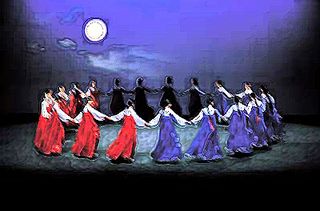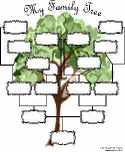 Friday was the anniversary of the U.S. Bombing of Hiroshima during World War II. Monday is the anniversary of its bombing of Nagasaki.
Friday was the anniversary of the U.S. Bombing of Hiroshima during World War II. Monday is the anniversary of its bombing of Nagasaki.
The explosion of the Fat Man atomic device over Nagasaki is pictured. It rose eleven miles into the sky over Ground Zero.
The important thing, though, is that it—together with the Little Boy device that was deployed over Hiroshima—killed approximately 200,000 human beings. And it ended the war with Japan.
It is understandable that many Americans at the time were relieved that the long burden of the bloodiest war in human history could finally be laid down. Many then, as now, saw the use of nuclear weapons against Hiroshima and Nagasaki as a necessary step to preventing even more casualties.
However, some of the blogging being done to commemorate the attack is most unfortunate.
Consider Michael Graham, who wishes his readers a “Happy Peace Through Victory Day.”
Today marks the anniversary of the single greatest act in the cause of peace ever taken by the United States:
Dropping the A-bomb on Hiroshima in 1945. That one decision, that one device, saved more lives, did more to end war, and created more justice in the world in a single stroke than any other. It was done by America, for Americans. It saved the lives of hundreds of thousands—if not millions—of American soldiers and sailors.
So, obviously, President Obama’s not too happy about it. . . .
Euroweenie peaceniks and an annoying number of American liberals see the bombing of Hiroshima as a shameful act. What is it America should be ashamed for—defeating an enemy that declared war on us? Bringing about the end of a fascist empire that killed millions of people, mostly Asians? Preventing the slaughter of the good guys—Americans—by killing the bad guys—the Japanese?
I am not a Euroweenie or a peacenik or a political liberal or even someone opposed to the use of nuclear weapons in principle. I can imagine scenarios in which their use would be justified. I can even deal with the cheeky “Happy Peace Through Victory Day” headline.
But Mr. Graham’s analysis of the situation on a moral level is faulty.
It is true that, by instilling terror in the Japanese government, the use of atomic weapons prevented further and, in all probability, greater casualties on both sides.
Preventing further and greater casualties is a good thing, but as the Catechism reminds us:
The Church and human reason both assert the permanent validity of the moral law during armed conflict. The mere fact that war has regrettably broken out does not mean that everything becomes licit between the warring parties [CCC 2312].
It isn’t just a question of the goal of an action. The goal may be a good one, but the means used to achieve it may be evil. The Catechism states:
Every act of war directed to the indiscriminate destruction of whole cities or vast areas with their inhabitants is a crime against God and man, which merits firm and unequivocal condemnation. A danger of modern warfare is that it provides the opportunity to those who possess modern scientific weapons – especially atomic, biological, or chemical weapons – to commit such crimes [CCC 2314].
The bombings of Hiroshima and Nagasaki were definitely acts of war directed to the destruction of whole cities or—at least—vast areas with their inhabitants. The only quibbling could be about whether this was “indiscriminate” destruction. Someone might argue (stretching the word “indiscriminate” rather severely and taking it in a sense probably not meant by the Catechism) that they were not indiscriminate attacks in that they were aimed at vital Japanese war resources (munitions factories, troops, etc.) and the only practical way to take out these resources was to use atomic weapons.
Mounting such a case would face a number of problems. One would have to show that Hiroshima and Nagasaki contained such resources (not that difficult to show) and that these resources themselves were proportionate in value to the massive collateral damage that would be inflicted (a much more difficult task) and that there was no other practical way—like a more targeted bombing—to take them out (again a difficult task).
But for purposes of argument, let’s grant all this. Let’s suppose that there were such resources, and that they were proportionate in value to the massive loss of civilian lives and that there was no other way to get rid of them.
Does that absolve the U.S. of guilt in these two bombings?
No.
You can see why in the logic that Mr. Graham used. It stresses the fact that the use of these weapons saved net lives. This was undoubtedly uppermost in the U.S. military planners’ thinking as they faced the possibility of an extremely bloody invasion of Japan in which huge numbers on both sides would die.
But notice what is not being said—either by Mr. Graham or anybody else: “Hiroshima and Nagasaki contained such important war widgets that without those widgets Japan would be unable to prosecute the war. Thus by taking out those military resources we could deprive Japan of its ability to make war.”
Neither is anybody saying something like this: “We needed to scare Japan into surrender by showing them that we could destroy all of their military resources. We needed to make them terrified of losing all their military resources so that, out of a desperate desire to preserve their military resources, they would surrender.”
These are the dogs that didn’t bark, and they are why this line of argument is a dog that won’t hunt.
The reason nobody says these things is that they were not the thinking behind the U.S.‘s actions. The idea was not to end the war through the direct destruction of military resources in these two cities, nor was it to end the war by scaring Japan into thinking we might destroy all of its military resources. It was scaring Japan into surrendering by threatening (explicitly) to do this over and over again and inflict massive damage on the Japanese population. In other words, to make them scared that we would engage in “the indiscriminate destruction of whole cities or vast areas with their inhabitants.”
That means that, even if Hiroshima and Nagasaki had contained military resources that of themselves would have justified the use of atomic weapons (which is very hard to argue), our intention still was not pure. We were still using Japanese civilians as hostages to the war effort, still threatening to kill civilians if Japan did not surrender. That was the message we wanted the Japanese leadership to get—not, “We will take out your military resources if you keep this up,” but, “We will take out big chunks of your population if you keep this up.”
That meant that the U.S. leadership was formally participating in evil. It does not matter if the attacks of Hiroshima and Nagasaki could (through some stretch of the imagination) be justified in themselves. The fact is that they were used to send a message telling the Japanese government that we would kill massive numbers of the military and civilian population, without discrimination. That message is evil, and to knowingly and deliberately send that message is to formally participate in evil.
That made these attacks war crimes.
Now, make no mistake. I’m an American. I’m a fan of the U.S. But love of the United States should not preclude one from being able to look honestly at the mistakes it has committed in the past. Indeed, it is only by looking at and frankly acknowledging the mistakes of the past that we can learn from them. Love of one’s country should impel one to help it not commit such evils.
Racial discrimination? Bad thing. Allowing abortions? Bad thing. Dropping nukes to deliberately kill civilians? Bad thing. Let’s try not to have things like these mar America’s future.
READ ABOUT THE HIROSHIMA AND NAGASAKI BOMBINGS.
What are your thoughts?

 On May 27, long-time White House correspondent Helen Thomas made remarks that have caused an uproar.
On May 27, long-time White House correspondent Helen Thomas made remarks that have caused an uproar.

